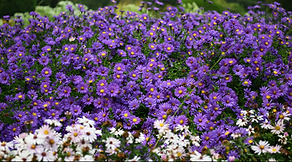
You’ve seen them everywhere; coneflowers, larkspur, peonies, columbine, hardy mums, oriental poppies and most wild flowers and some weeds. What do they have in common? They are all herbaceous perennials. What is a herbaceous perennial you ask? Read on to learn what they are and how to care for them.
(Some of the links within this post are affiliate links on which I receive a small compensation from the sale of certain items.)
(As an Amazon Associate I earn from qualifying purchases.)
What is a Herbaceous Perennial?
Herbaceous Plant
Let’s begin by explaining what herbaceous means. A herbaceous plant is a nonwoody plant where, above the ground, the plant either completely or partially dies back in the winter. They may have a root, tuber, rhizome or bulb underground which allows them to survive. This nonwoody characteristic differentiates them from trees and bushes.
There are 3 types of herbaceous plants: annuals, biennials, perennials. For more information on these classifications, refer to Flower Classifications.
All annual plants are considered herbaceous. Their stems are soft and supple and have roots underground. However, they die off at the end of their growing season.
Perennial Plant
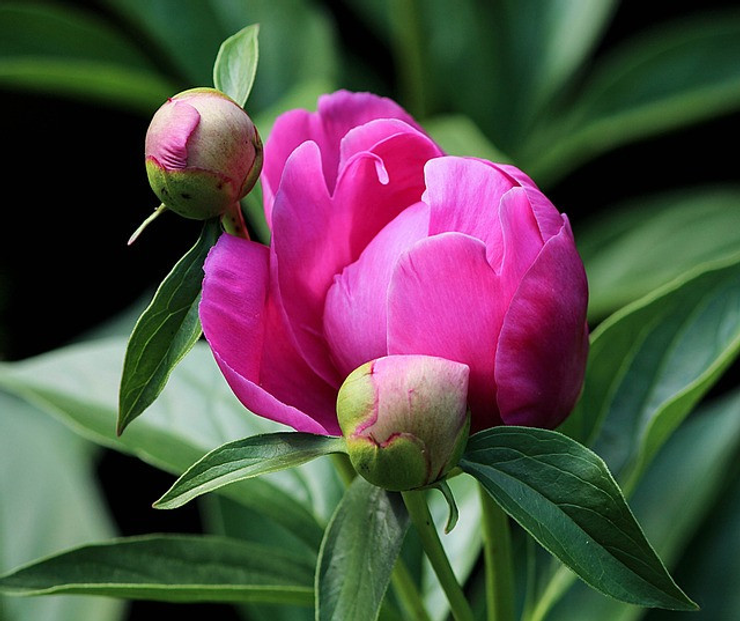
A perennial plant or a perennial is one that stays alive for more than two years and has little or no woody stems. This characteristic also differentiates it from trees and shrubs, because technically trees and shrubs are perennials.
Herbaceous Perennial
Combining the two definitions, a herbaceous perennial is a plant with little or no woody stems that lives for more than two years. In addition, it completely or partially dies back in the winter.
How to Care for Herbaceous Perennials
A perennial garden filled with herbaceous plants is easy to care for. There are basic requirements for such a garden. Below are a few suggestions when caring for a herbaceous perennial garden.
Location
Carefully note the site in which you place your garden. Consider sunlight, water puddling tendencies, temperature, slope of the property, and air circulation. For more on determining the location of a garden, refer to Gardening Ideas for Beginners.
Soil
This is an important factor when considering a perennial garden. Most herbaceous perennials require good, rich, well-drained soil with a pH between 6.0 and 7.0. Add organic matter to help retain moisture and add nutrients. Mulch newly planted perennials with 2 to 3 inches of natural mulch to keep the plant’s roots cool, reduce weeds, and keep the soil moist.
Plants
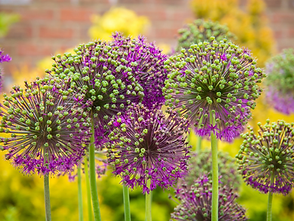
When purchasing plants, read each specification regarding sunlight, watering, spacing, and mature height. Do not over pack your garden. It will be much more difficult to maintain.
A good rule of thumb for spacing is if the mature height is 3 feet or higher, plant them 2 to 3 feet apart; plants 2 to 3 feet tall – plant them one and half to 2 feet apart; if less than 2 feet in height, plant them 1 foot apart.
Water
Soak the plants after they have been planted. Do not allow them to dry out the first year. Water at least one inch of water per week. I usually fill a 2 gallon watering can and pour it on the root section of the plant once per week.
Even plants that are drought tolerant are vulnerable until they are fully established. Continue watering them regularly throughout the first growing season in order for the plants to grow deep root systems.
Fertilizer
Most perennials do not need much fertilizer. If you over fertilize the plants, they will produce more greenery and less blossoms. It will also become leggy.
Staking
If you know the plant has large blossoms that become top heavy, place a stake in the ground in the spring to support the plant as it is growing. Placing it early will allow the greenery to spread around the stake and camouflage it.
Also, if the plant has long stems and leaves, stake it. Failing to do so will risk the plant blowing over in the wind and in strong rains.
Purchase Perennials from Nature Hills Nursery
When to Cut Back Herbaceous Perennials
All perennials are different. Some like to be cut back in the fall, others in the spring.
One reason to cut back perennials in the fall is to rid the plant and garden of disease. Cut the stalks, leaves, and stems back to the ground with clippers and throw them in the garbage, far removed from your garden. Do not put the remains in the compost bin. The diseases may grow and spread to other plants. Once you have cut away the dead plants, clean your clippers with a mixture of bleach and water. Here is a list of perennials that can be cut back in the fall.
Cut Back in the Fall
- Bearded Iris
- Bee Balm (Monarda)
- Phlox
- Lilies
- Gaillardia (Blanket Flower)
- Catmint (Nepeta)
- Columbine (Aquilegia)
- Daylily (Hemerocallis)
- Peony (Paeonia)
- Salvia
- Solomon’s Seal (Polygonatum odoratum)
- Yarrow (Achillea)
- Hostas
- Astilbe
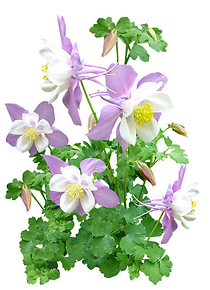
Other reasons to wait until spring to cut back perennials include:
- Add interest to a winter garden
- Supply animals with seed throughout the winter
- Create a protected area for winter animals
Cut Back in the Spring
Annual wildflowers: this will allow them to drop their seeds and provide a new round of flowers in the next season
Echinacea (Coneflowers) and Rudbeckia (Black Eyed Susan) are left to the spring because they provide seeds for wild birds in the winter.
Sedum (Autumn Joy) and ornamental grasses can be left until spring to add height and interest to your garden.
Butterfly Weed, Ferns, and Coral Bells should be left to be pruned in the spring in order to protect their crowns for next year’s blossoms.
Examples of Herbaceous Perennials
Below is a sampling of some of my favorite herbaceous perennials.
Daylilies
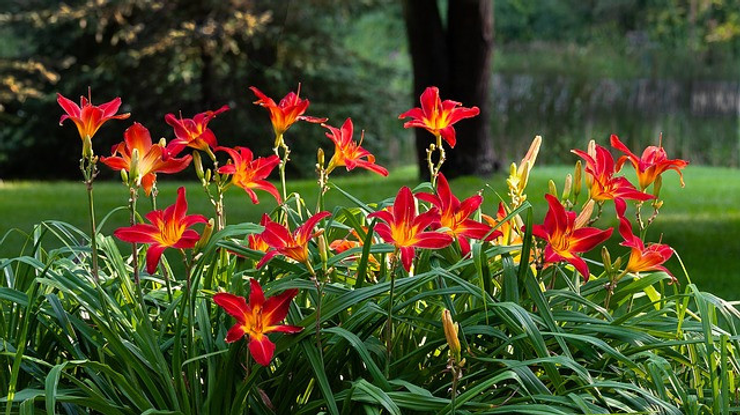
Daylilies are the most carefree perennial to grow. They are not fussy about soil and will grow and multiply in shade or full sun. These lilies bloom from mid-summer through the fall, having a new bloom each day.
Daylilies can be planted on steep slopes and in dry or wet areas. Their root system is very thick, which helps reduce erosion and choke out most weeds on hills.
Snip off the dead buds being careful not to interfere with new buds. Cut back the leaves and flower stems once they are finished blooming to prevent flowers from going to seed and to keep them looking neat and tidy.
Their foliage will complement ornamental grasses, echinacea and asters.
They grow best in zones 4 – 9.
Bee Balm
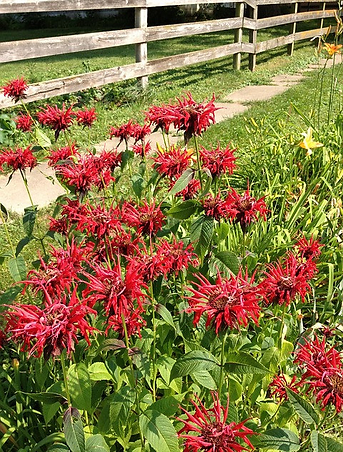
Bee Balm is a lovely flower that blooms profusely in colors of red, pink, purple and white. They add a lovely pop of color in a perennial garden.
This flower attracts many pollinators such as butterflies, honeybees and hummingbirds. Bee Balm’s seed heads will attract a variety of birds throughout the winter.
Bee Balm grows between 2 and 4 feet tall. It’s a great backdrop for a pollinator garden.
Space your plants between 18 and 24 inches in rich, well-draining soil. If you plant the flowers too close together they may develop powdery mildew on their leaves. They survive best when there is good air circulation around the plant.
Bee Balm grows best in full sun. It will tolerate partial shade, but will not have as many blooms as when it is in full sun. They usually bloom around the Fourth of July in the States. Bee Balm always reminds me of bursting fireworks.
Invasive
They are in the mint family and grow from rhizomes. Be careful because they can become invasive if given an excellent environment in which to grow. For more on mint, read How to Grow Mint Indoors.
Bee Balm thrives in zones 3 – 9.
Shasta Daisy
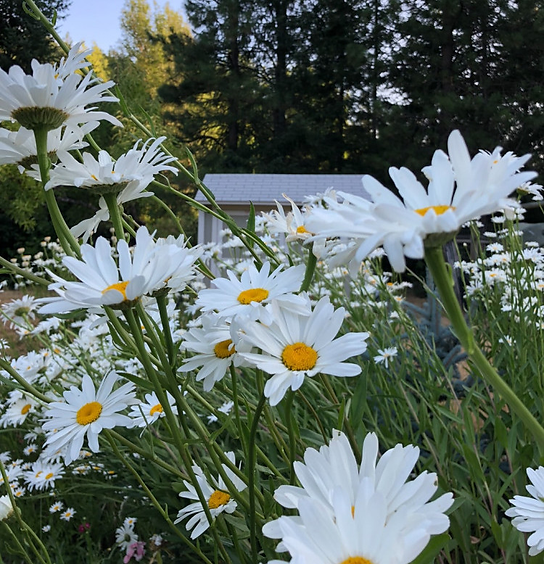
Nothing brings more joy to a room than a vase full of Shasta Daisies. I like to call them the happy plants. These long lasting beauties make great cutting flowers and bloom from late spring through early fall. Some varieties have 2 blooming cycles.
Shasta Daisy is the epitome of the perfect “she loves me, she loves me not” flower with pure white petals leading from a glorious yellow center.
There are many varieties of the Shasta Daisy with blooms ranging in size from 2 to 5 inches in diameter.
They prefer full sun and a rich organic, well-drained soil. Different varieties grow from 6 inches to 4 feet tall
Animal Resistant and Tough
Shasta Daisies are deer and rabbit resistant and have few disease and insect problems. They are also drought tolerant.
Shasta Daisies are extremely tough and grow in clumps from rhizomes. They have a tendency to spread but are not as invasive as mint or bee balm. Plant them in an area where they can spread their wings and not interfere with other plants.
They grow well in zones 5 – 9.
Siberian Iris
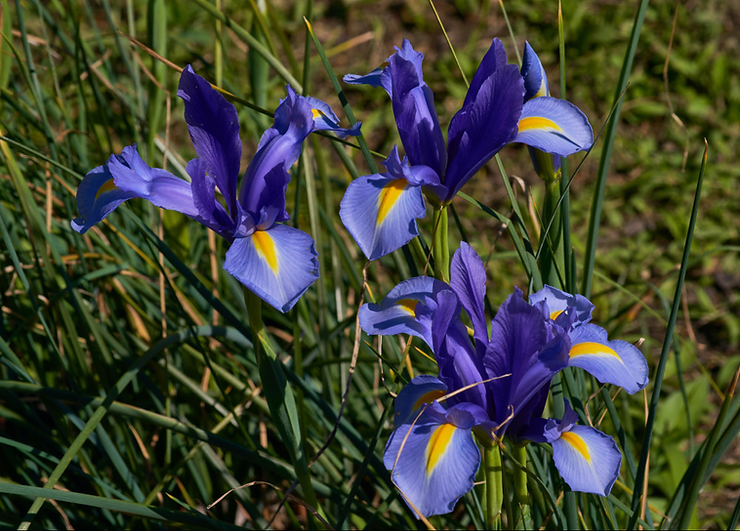
Unlike the Bearded Iris, the Siberian Iris has beautiful delicate flowers with soft, grass-like foliage. They come in varieties of pink, blue, yellow and white.
Siberian Iris originated in the grasslands of central and eastern Europe. They can be found growing wild in rolling fields.
They bloom from late April to early summer depending on the variety. You can ensure a long season of Siberian Iris by planting many varieties. Early varieties include “Bouquet” and “Indy”, whereas later varieties are “King of Kings” and “Liberty Hills”.
Siberian Iris grow 2 to 4 feet tall, and one mature plant can produce up to 20 stems of long lasting flowers. They make great cut flowers.
Rhizomes
These rhizomatous flowers spread quickly, so be careful where you plant them. Siberian Iris prefer full sun and a moist, acidic, well drained soil.
Iris means goddess of the rainbow in Greek mythology. It has long been a symbol of royalty throughout history.
Siberian Iris thrive in zones 2 – 9.
Final Thoughts/Herbaceous Perennials
There are numerous herbaceous perennials; too numerous to list here. Creating a perennial garden is fun and sustainable. Refer to Continuous Blooming Perennials for more information. Once it is established you will enjoy many years of beauty right in your own backyard.
I hope you have enjoyed this article. Please share it with others and leave a comment below. I’d love to hear from you!
Happy Gardening,
Nina
